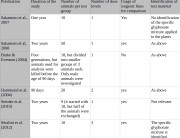Summary answer:
Séralini measured food intake more often than industry studies on GM foods and the absence of data in his published paper does not invalidate the findings observed.
Detailed answer:
Industry studies on GMOs, as well as Séralini’s, did not measure daily food intake to ascertain the amount of the test substance being ingested. Séralini measured individual food and water intake twice weekly. This was a more frequent and detailed measurement than industry tests which measured only food intake, and only on a weekly basis. Monsanto’s 90-day study on NK603 maize also does not present individual food intake data but only the mean amount consumed for each group.1
In an example of double standards, apparently this method is acceptable in Monsanto’s study concluding that the GM food is safe, but not in Séralini’s study concluding that it is not safe. If Séralini did not know the amount of toxin ingested that caused the effects found, Monsanto did not know the amount of GM maize ingested that it claimed was safe.
The fact that the food intake data was not presented in the paper does not invalidate Séralini’s observed findings.
References:
1. Hammond B, Dudek R, Lemen J, Nemeth M. Results of a 13 week safety assurance study with rats fed grain from glyphosate tolerant corn. Food Chem Toxicol. Jun 2004; 42(6): 1003-1014.
Sources of criticism:
European Food Safety Authority
http://www.efsa.europa.eu/en/efsajournal/pub/2910.htm
http://www.efsa.europa.eu/en/efsajournal/pub/2986.htm
BfR (German federal institute for risk assessment)
Monsanto
http://www.monsanto.com/products/Documents/ProductSafety/seralini-sept-2012-monsanto-comments.pdf


















